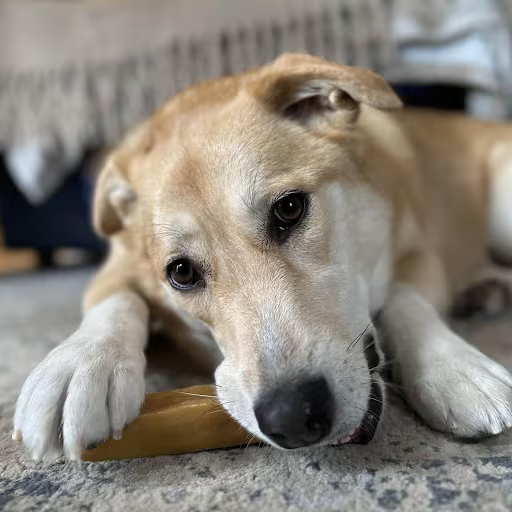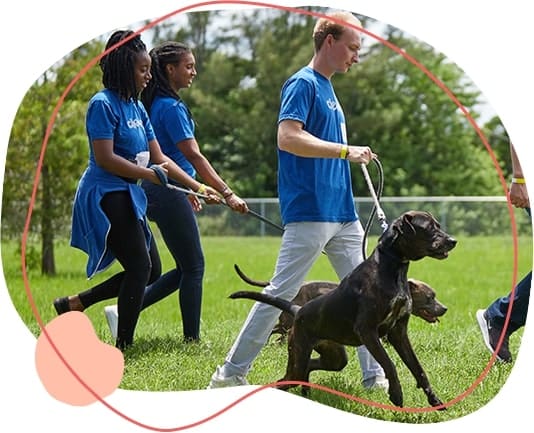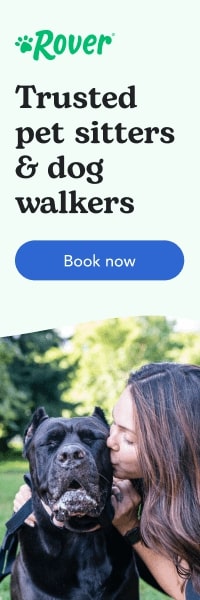Leaving your dog home alone can be a challenging experience for both you and your furry friend. While we all have to go out for work or errands, it's essential to make sure that your dog is happy, safe, and comfortable during your absence. Dogs are social animals, and they thrive on interaction, so ensuring that they are entertained and content while you're away requires some thought and preparation.
In this guide, we’ll walk you through practical tips and strategies to keep your dog happy when home alone. With these ideas, you’ll feel confident that your dog is well cared for even when you're not around.
1. Create a Safe and Comfortable Space

The first step to keeping your dog happy when home alone is ensuring that they feel safe and comfortable. If your dog has a specific area in the house where they feel secure, such as a crate, bed, or playpen, make sure that they have access to it. If your dog is crate-trained, this could be a calming space for them while you're away.
Make sure the area is free of hazards and has water, their favorite blanket, or toy to keep them calm. A quiet, cozy environment will help reduce feelings of anxiety and stress.
2. Exercise Before You Leave

One of the best ways to ensure that your dog stays happy when home alone is to make sure they’ve gotten plenty of exercise before you go. A tired dog is a happy dog! Try taking your dog for a long walk, run, or play session before you leave. This will help burn off excess energy, making it less likely for them to get bored or anxious during your absence.
Dogs need physical and mental stimulation, so mix up activities with some interactive toys or puzzles to keep them engaged.
3. Interactive Toys and Puzzles

Interactive toys are fantastic tools for keeping your dog engaged while you’re gone. These toys are designed to stimulate your dog’s mind and can help prevent boredom and anxiety. You can find a variety of toys that dispense treats or require problem-solving, such as treat-dispensing balls, puzzle feeders, or chew toys.
Look for toys that challenge your dog’s mind but are not so difficult that they become frustrated. Rotate the toys regularly to keep things fresh and exciting!
4. Leave the TV or Music On
Many dogs feel comforted by background noise. Leaving the TV or music on can provide a calming environment and help reduce feelings of loneliness. You can even play dog-specific content, such as videos or sounds designed for pets. There are playlists on streaming platforms designed specifically to help calm anxious dogs.
Just make sure the volume is not too high, and select calming music or nature sounds to avoid overstimulation.
5. Use Dog-Specific Cameras or Monitors
If you're concerned about how your dog is doing while you’re away, consider investing in a pet camera. These cameras allow you to monitor your dog in real-time and can even have two-way audio so you can talk to your pet if needed. Some cameras also allow you to dispense treats remotely, which can be a fun way to reward your dog for good behavior while you're not at home.
Knowing that you can check in on your dog at any time can give you peace of mind and help you adjust your approach if needed.
6. Hire a Dog Walker or Pet Sitter
If you are away for an extended period, consider hiring a dog walker or pet sitter to break up the day. A midday visit from a professional can provide your dog with a much-needed bathroom break, some exercise, and attention. This will help to prevent them from feeling isolated and will make their time alone more bearable.
Pet sitters can also offer companionship, engage in playtime, and ensure your dog has fresh water and food, which makes the separation easier for both you and your dog.
7. Establish a Routine
Dogs are creatures of habit, and they feel more secure when they know what to expect. Establishing a consistent routine for feeding, walks, playtime, and when you leave and return can provide comfort and reduce anxiety.
Try to keep your departures and arrivals low-key to avoid causing excitement or distress. If your dog gets anxious when you prepare to leave, consider desensitizing them to your departure routine by practicing it in small, non-stressful increments.
8. Consider a Pet Companion
If your dog has separation anxiety or is particularly lonely, you may want to consider adopting another dog as a companion. Having a fellow canine around can provide comfort and reduce the stress of being left alone. However, it’s essential to make sure the dogs are compatible and that both will benefit from the arrangement.
If adopting another dog isn’t an option, you can also explore alternatives like pet daycare or arranging playdates with friends or neighbors' dogs.
9. Training and Behavior Modification
Sometimes, separation anxiety can lead to undesirable behaviors, such as excessive barking, destructive chewing, or accidents in the house. In such cases, training can be incredibly helpful. Behavioral modification techniques, like crate training, can teach your dog to feel comfortable while alone.
Consult with a professional dog trainer if your dog struggles with anxiety, as they can guide you through specific exercises to reduce their stress and help them feel more secure.
10. Provide a Special Treat or Toy to Look Forward To
To make your dog’s alone time feel special, you can leave them with a long-lasting treat or toy that they can only have when you’re away. This could be a frozen Kong filled with peanut butter, a puzzle toy stuffed with treats, or a chew bone. The novelty of this special “alone-time treat” can make their separation from you feel less stressful.
FAQ: How to Keep Your Dog Happy When Home Alone
Q1: How long can I leave my dog home alone?
A1: It depends on your dog's age, breed, and temperament. Generally, adult dogs can stay home for about 4-6 hours, but puppies or older dogs may need more frequent breaks. If you must be gone longer, consider having a dog walker or sitter come to visit.
Q2: My dog barks when I leave. How can I stop it?
A2: Excessive barking may indicate separation anxiety. Try desensitizing your dog to your departure routine, and gradually increase the time you're gone. Training techniques like positive reinforcement and crate training may also help reduce barking.
Q3: Is it okay to leave my dog in a crate all day?
A3: While crate training can be beneficial, leaving your dog in a crate for extended periods is not recommended. It can lead to stress and physical discomfort. Try to provide breaks, exercise, and companionship if you're gone for long hours.
Q4: Can I leave my dog with a new toy while I'm gone?
A4: Yes, leaving your dog with a new toy or puzzle can help keep them entertained and mentally stimulated. Just make sure the toy is safe and appropriate for your dog’s size and chewing habits.
Q5: What if my dog refuses to eat while I'm gone?
A5: Some dogs experience a loss of appetite due to anxiety when left alone. Ensure that your dog has access to fresh water, and try offering them a special treat. If the problem persists, consult with your vet to rule out health concerns.
Conclusion
Keeping your dog happy when home alone is all about preparation, routine, and understanding your pet's needs. By providing a safe space, exercising them before you leave, offering stimulating toys, and considering help from others, you can ease their loneliness and help them feel comfortable while you're away. With these tips in mind, you’ll be able to leave your dog at home with confidence, knowing they are happy and secure.














